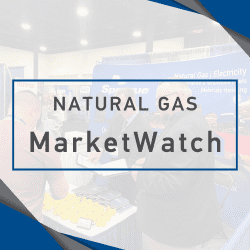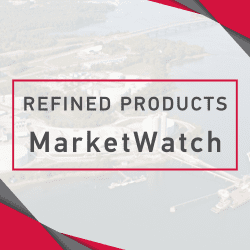Recap: Oil futures fell on Tuesday, as European countries suspended the use of Oxford/AstraZeneca’s vaccine after reports of possible serious side effects. Investors grew worrisome that the slow pace of vaccinations in Europe could hurt an economic recovery and fuel demand. Traders are trying to determine demand going forward, as the U.S. continues to roll out its vaccine program, while refiners in Texas struggle to bounce back from the mid-February deep freeze. April WTI fell 59 cents, or 0.90%, so settle at $64.80 a barrel, while May Brent lost 49 cents, or 0.7%, to settle at $68.39 a barrel. Petroleum products slipped as well, with April RBOB losing 0.2%, to settle at $2.10 a gallon and April heating oil shedding 0.8%, to settle at $1.93 a gallon.
Market Outlook: It took some time, but WTI is finally reacting to the strong builds we have seen in U.S. crude oil inventories, with the front end of the forward curve showing signs of weakness. The May WTI contract has traded at a premium to the April, a condition known as contango. This bearish scenario is not particularly surprising given the aforementioned inventory builds, which are attributed to last month’s deep freeze in Texas, but is something to keep an eye on. The May21/Dec21 WTI spread has gained 375% since the beginning of November, as it went from -$1.69 to a high of $4.64 in March. This spread is currently trading at $3.74 and looking at the chart, it appears that it has more room to retrace. With WTI posting a lower high following Monday’s sell-off, we view this as a sign that selling pressure is getting stronger and that the short term momentum of this market has shifted to the downside. Support is set at $64.66 and below that at $63.10. To the upside, resistance is set at $65 and above that at $66.40.
Fundamental News: Crude oil exports from Saudi Arabia appeared to be relatively steady in the first half of March. Observed exports in the first 15 days of March were 6.1 million bpd, compared with 5.9 million bpd for all of February.
China resumed storing crude oil in the first two months of the year with almost 1 million bpd being added to inventories in January and February, rebuilding stockpiles after a drawdown toward the end of last year. According to calculations based on official data, about 920,000 bpd were directed to inventories in the first two months of the year. China’s imports and domestic output totaled about 15.05 million bpd which was available to refiners in the January-February period, while processing was 14.13 million bpd, leaving a gap of about 920,000 bpd that flowed into commercial and strategic stockpiles.
Saudi Arabia’s Energy Minister, Prince Abdulaziz bin Salman, said the country plans to cut domestic demand of liquid hydrocarbons by 1 million bpd for use “in a better way”. Before the COVID-19 pandemic, the country was consuming 491,000 bpd of oil for industrial use and power generation during the height of its summer demand in 2019. Reducing domestic demand could help Saudi Aramco increase its long-term spare capacity from levels of about 1.5 million bpd to 2 million bpd.
According to the International Renewable Energy Agency, oil demand has passed its peak and will likely cease to be used by 2050. It said consumption of oil reached its peak around 2019 and added that oil production will decline to 11 million bpd by mid-century, compared with the current level of about 100 million barrels.
The increased amount of Iranian crude flowing into China in recent weeks is impacting imports from other countries and threatening to complicate efforts by the OPEC+ alliance to tighten supply in the global market. China is currently buying close to 1 million bpd of sanctions crude, condensate and fuel oil from Iran, displacing grades from countries such as Norway, Angola and Brazil.
Early Market Call – as of 8:30 AM EDT
WTI – Apr $64.05, down 75 cents
RBOB – Apr $2.0527, down 4.85 cents
HO – Apr $1.9052, down 2.75 cents
View the Sprague Refined Products Market Watch Report in a downloadable pdf format by clicking below.
Click to view more online:
Heating Oil Supplier
Diesel Supplier
View market updates
View our refined products glossary
Go to SpraguePORT online










